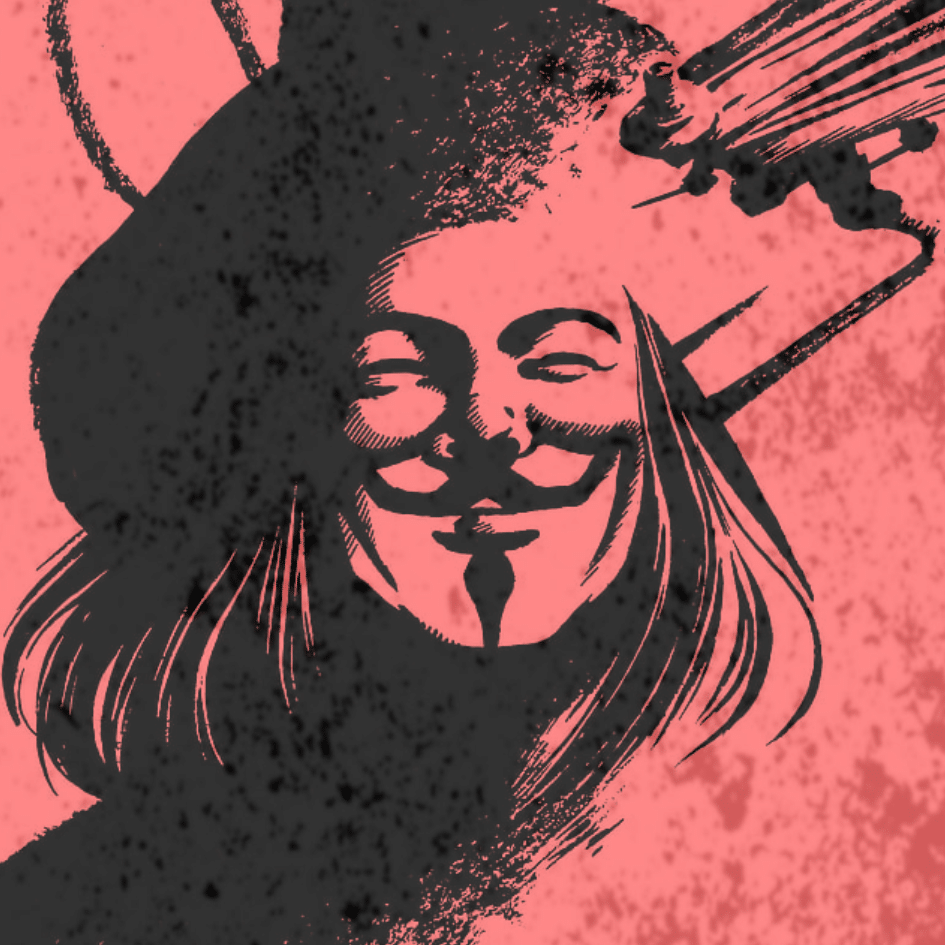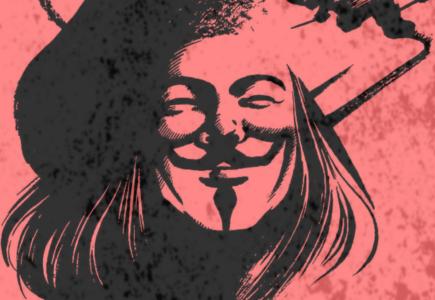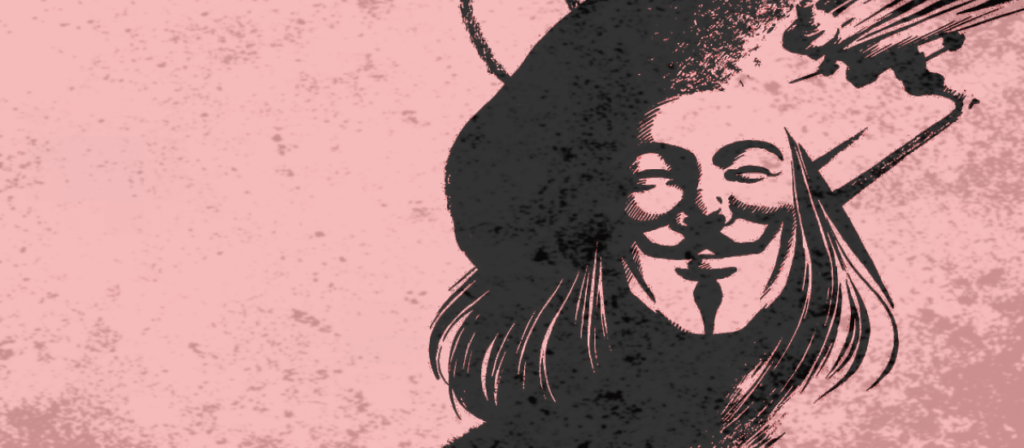
10-09-23 | In 2006 Warner Bros. released V for Vendetta, based on the seminal graphic novel by British writer Alan Moore. It introduced the world to V, an enigmatic freedom fighter, whose visage is hidden behind a Guy Fawkes mask. V takes on the totalitarian regime that Britian has become in ‘the near future’. Not just by striking violently at its leaders, but by urging the nation to stand up and topple their evil government.
Since the film was released V’s Guy Fawkes mask has been adopted by real life political activists on countless occasions. Forty years after the release of the groundbreaking graphic novel, V is all around us, demanding that we right the wrongs of this world. More impressive still: 400 years after his execution, political terrorist Guy Fawkes’ impact is still being felt. Not just in Britian, but across the globe. But who was Guy Fawkes? Is his legacy, steeped in the blood of innocent people, worthy of our continued celebration?
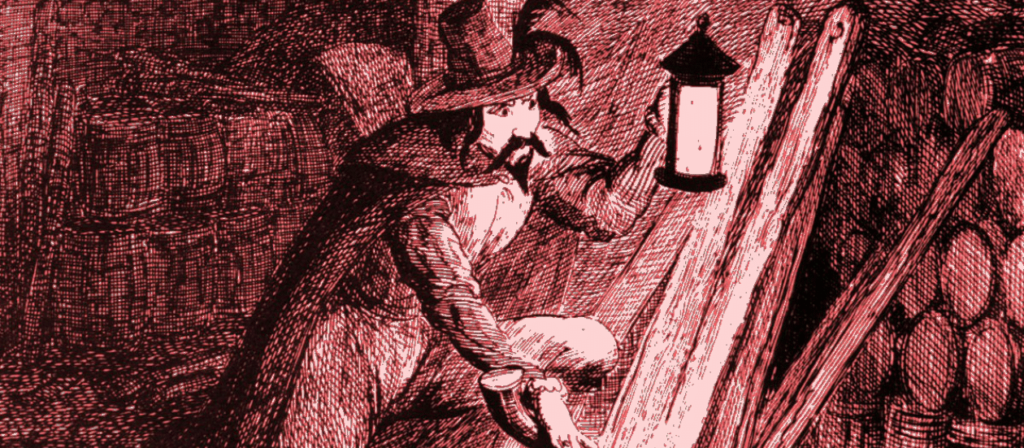
THE GUNPOWDER PLOT
It is assumed that Fawkes was born in 1570, a few decades after King Henry VIII had severed ties with the Roman Catholic Church. After the death of his father his mother married a Catholic, thus setting the stage for Guy’s religious convictions. Fawkes became a devout Catholic in a predominantly Protestant country, steadily edging towards fanaticism. The 1590s saw him abandoning England to join the Catholic Spaniards in their battles against the Dutch and the French. During his fighting days he gained a reputation as a man who possessed brains and brawn in equal measure, not to mention a great sense of loyalty to his friends.
This attracted the attention of Robert Catesby, an English Catholic who conspired to overthrow the Protestant government in favour of a Catholic one. Guy Fawkes was recruited to be one of the central figures in what was to be known in history as the Gunpowder Plot. The plan was relatively straightforward: the conspirators leased storage space underneath the House of Lords, which over the course of several days they filled to the brim with kegs of gunpowder. With King James present during the opening of the political year, the conspirators could wipe out both the King and a significant amount of political leaders in one fowl swoop.
One of the conspirators got cold feet, however, and send an anonymous letter to Lord Monteagle. Despite the conspirators being aware of the betrayal, they continued to guard the gunpowder in the hope of assassinating the King regardless. On the 5th of November, as Guy Fawkes was on watch, the authorities found and apprehended him. He was severely tortured at the Tower of London. It proved difficult to break his spirit. Until the 7th of November, that is, when he finally cracked. One by one the plotters were hunted down and extinguished. Fawkes was hanged on the 31st of January 1606, after which his lifeless body was quartered.
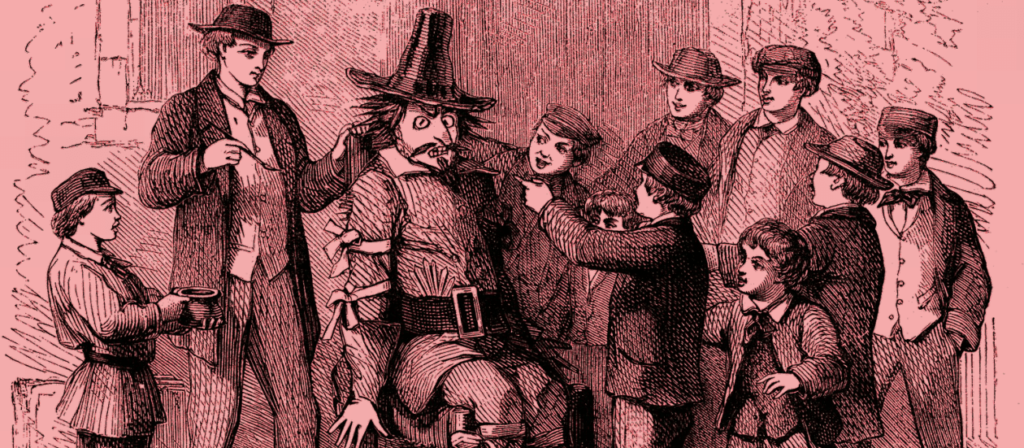
TERRORIST OR LIBERATOR?
Upon his arrest on the 5th of November, Guy Fawkes immediately became a fixture of popular culture. The authorities orchestrated a series of celebrations, which over time developed into the phenomenon known as Guy Fawkes Night. During these events Fawkes is presented as a brooding bogeyman. An effigy of the vile Fawkes in traditionally burned, and thus good symbolically conquers evil once more. And yet as early as 1841, when William H. Ainsworth published Guy Fawkes, or the Gunpowder Treason, artists and commentators have questioned whether Fawkes was as sinister as he had been depicted up until that point.
There is a real argument to be made that Guy Fawkes role in the plot has been exaggerated, by virtue of him being present at the moment of the discovery of the gunpowder. Most Britains are familiar with the name Guy Fawkes, but do they know Robert Catesby, who was the brains behind the operation? On the other hand one might argue that Fawkes was a professional trouble maker. An opportunist abusing his Catholic background as an excuse to adventure his way through Europe. And we’re not even getting into the discussion of whether it’s the Church of England or the Roman Catholic Church most deserving of such a defender.
Religion is at the hearth of the Gunpowder Plot. Both Protestants and Catholics have a history of violently imposing their interpretation of the Bible upon the other. Guy Fawkes was not the first religious fanatic to take action and he won’t be the last. Despite of this, the (let’s face it) religious terrorist Fawkes has been embraced by a group of modern thinkers who prefer to see him as a man who dares to question authority. Furthermore, they present him as an example of a man willing to take action. One of those people was Alan Moore.

FAWKES’ FACE OF DEFIANCE
V for Vendetta debuted in 1982 as an episode in the British anthology magazine Warrior. While working on the explicitly political superhero with writer Alan Moore, artist David Lloyd suggested that V might appear as a stylized version of Guy Fawkes. Moore ran with the idea and spun it into a fully fledged tribute to Fawkes, with Guy Fawkes Night bookending the story’s beginning and end. Like Fawkes, V wishes to overthrow the current rulers of Britian. But unlike the conspirators, he has no intention of taking the throne.
Despite of his violent approach to revolution, Alan Moore’s V puts his trust in the man on the street. Moore proudly identifies as an anarchist and through V he encourages the citizens of Britian to take matters into their own hands. ‘Power to the people’ is V for Vendetta’s ultimate message. And boy have they responded! The release of the feature film adaption in 2006 has inspired countless activists to adapt V, and therefore Fawkes, as their symbol of ultimate freedom. Among them the notable group of hackers and online activists collectively know as Anonymous.
In keeping with Moore’s theory of anarchy, activists wearing Guy Fawkes masks have done good and caused damage in equal measures. Afterall, there is no larger force deciding who gets to wear a Guy Fawkes mask. Which is just the way the comic book author likes it. Fawkes has become the face of faceless warriors, be they good or bad. As such the Guy Fawkes mask is a symbol of neither good or evil. Instead its history is complicated and multifaceted, just like the real Guy Fawkes. Terrorist or liberator? Traitor or freedom fighter? You decide …

